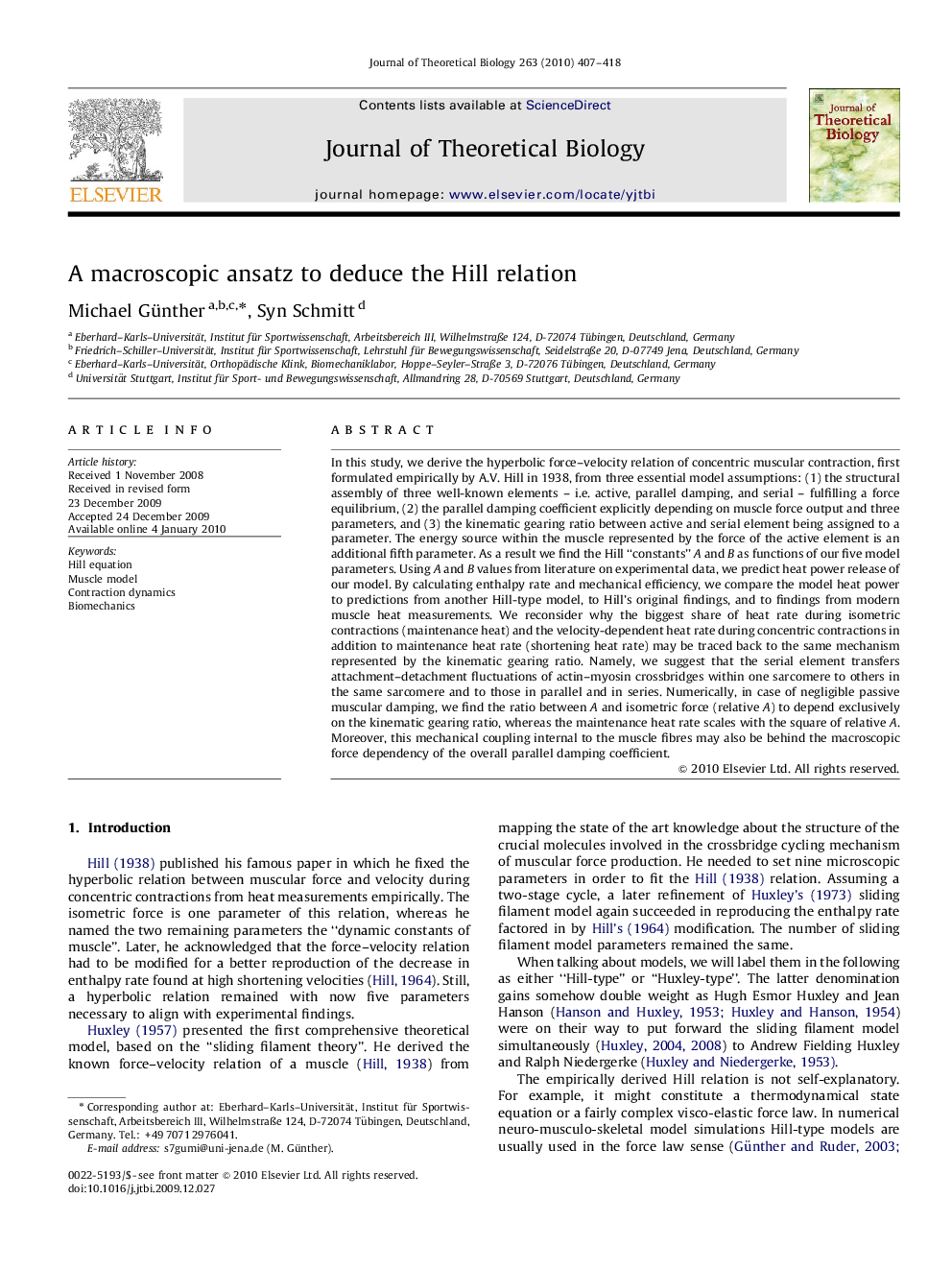| کد مقاله | کد نشریه | سال انتشار | مقاله انگلیسی | نسخه تمام متن |
|---|---|---|---|---|
| 4497817 | 1318952 | 2010 | 12 صفحه PDF | دانلود رایگان |

In this study, we derive the hyperbolic force–velocity relation of concentric muscular contraction, first formulated empirically by A.V. Hill in 1938, from three essential model assumptions: (1) the structural assembly of three well-known elements – i.e. active, parallel damping, and serial – fulfilling a force equilibrium, (2) the parallel damping coefficient explicitly depending on muscle force output and three parameters, and (3) the kinematic gearing ratio between active and serial element being assigned to a parameter. The energy source within the muscle represented by the force of the active element is an additional fifth parameter. As a result we find the Hill “constants” A and B as functions of our five model parameters. Using A and B values from literature on experimental data, we predict heat power release of our model. By calculating enthalpy rate and mechanical efficiency, we compare the model heat power to predictions from another Hill-type model, to Hill's original findings, and to findings from modern muscle heat measurements. We reconsider why the biggest share of heat rate during isometric contractions (maintenance heat) and the velocity-dependent heat rate during concentric contractions in addition to maintenance heat rate (shortening heat rate) may be traced back to the same mechanism represented by the kinematic gearing ratio. Namely, we suggest that the serial element transfers attachment–detachment fluctuations of actin–myosin crossbridges within one sarcomere to others in the same sarcomere and to those in parallel and in series. Numerically, in case of negligible passive muscular damping, we find the ratio between A and isometric force (relative A) to depend exclusively on the kinematic gearing ratio, whereas the maintenance heat rate scales with the square of relative A. Moreover, this mechanical coupling internal to the muscle fibres may also be behind the macroscopic force dependency of the overall parallel damping coefficient.
Journal: Journal of Theoretical Biology - Volume 263, Issue 4, 21 April 2010, Pages 407–418